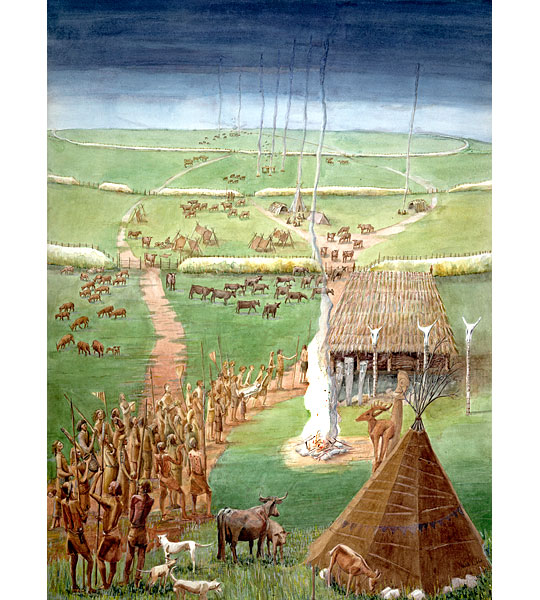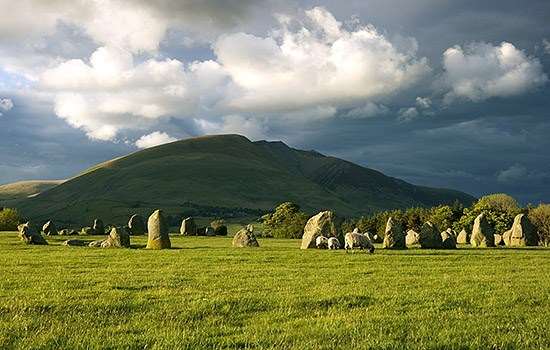History of Windmill Hill
Windmill Hill is famous for being one of the first sites excavated to provide evidence of the life of early farming communities in southern Britain. It is also the largest of all known causewayed enclosure sites in Britain.

History and Excavations
Its discovery and preservation are due to Alexander Keiller. He bought most of the site in the 1920s (saving it from Marconi, the wireless pioneers, who planned to build a relay station on the summit) and carried out meticulous excavations until the Second World War.
His finds came mainly from the three concentric ditches and included flint tools and fragments of early pottery, together with human and animal bones, including the intact skeleton of a young child. Many of these objects can now be seen in the Alexander Keiller Museum at Avebury.
From Keiller’s discoveries, and later investigations, it seems that Windmill Hill was built around 3675 BC, when the enclosure was constructed, and remained in use until around 2500 BC.
Making the Ditches
The massive effort of digging the three ditches seems to have happened rather spasmodically, perhaps in slack periods of the agricultural year, and perhaps by several different local groups.
It has been estimated that at least 62,000 hours were spent in the construction, undertaken over several years as successive ditches were added.
Purpose
Large numbers of cattle and sheep were killed or eaten on the site and it is possible that it might have been a place to hold festivals, or a market where animals were slaughtered and artefacts traded.
Alternatively, it could have been a site where ritual feasts were held. Perhaps it was all of these things.
The rectangular enclosure to the east, contemporary with the circular ditches, has been interpreted as a mortuary enclosure. This was where human corpses were left to be picked clean of flesh, prior to the ritual interment of the skull and principal bones in a chambered tomb such as that of West Kennet nearby.
Description
Three concentric rings of ditches circle the hilltop, enclosing an area of 21 acres (8.5 hectares). None of these ditches is continuous as they are broken at intervals by crossing points – hence the term ‘causewayed’.
Each ditch would once have been fronted by a bank, though most of these have now disappeared, either through falling back into the ditch or more recent ploughing.
From the end of the third millennium BC, Windmill Hill seems to have been largely abandoned. It is possible that a folk memory of the former importance of the site lived on, since the summit of the site later became the focus of a Bronze Age cemetery. The remains of these great tumuli can still be seen although there is little information about their structure or contents.


